40 years ago, he became the first one-man spacecraft
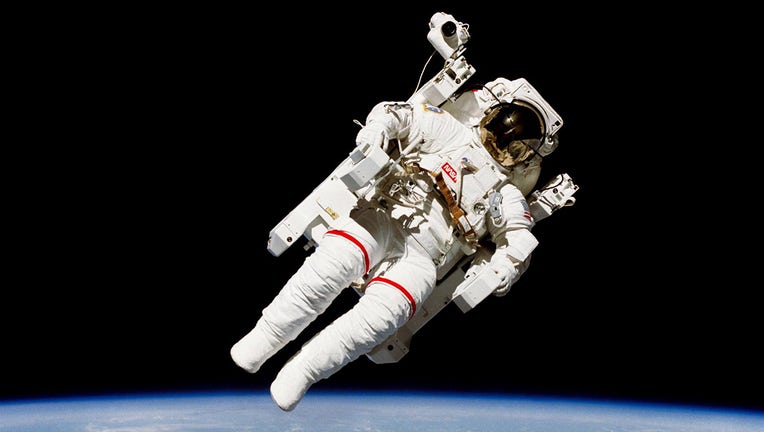
File: Astronaut Bruce McCandless II is a few meters away from the cabin of the Earth-orbiting space shuttle Challenger in this iconic photo taken by Hoot Gibson (NASA photo).
CAPE CANAVERAL, Fla. - On this day 40 years ago, astronaut Bruce McCandless drifted away from the space shuttle and into history. The photo of his untethered spacewalk became one of the most iconic images of the decade and even the entire space program.
You’ve undoubtedly seen the photo. It shows McCandless suited up in the white manned maneuvering unit – the MMU, in classic NASA acronym style – floating in stark contrast with the blackness of space, the bright blue Earth at his feet.
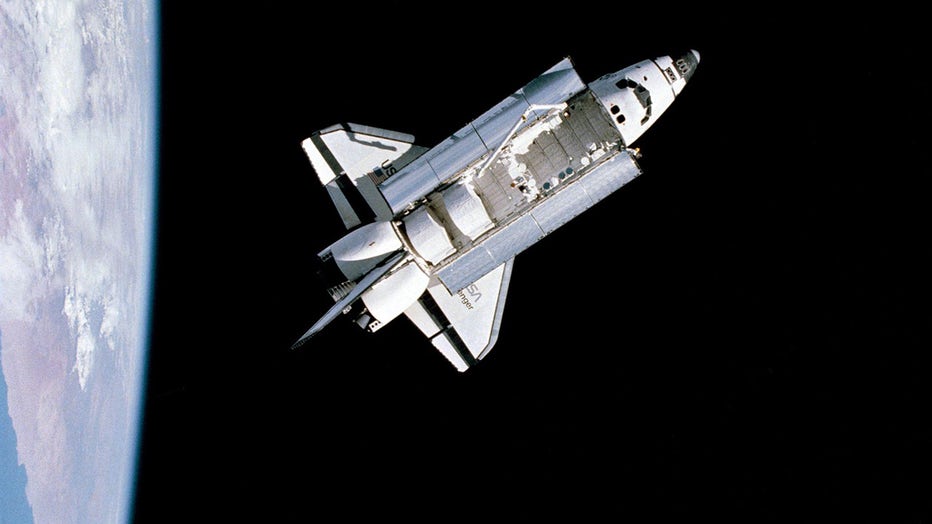
Looking the other way: This photo of Challenger was taken by a camera aboard the MMU (NASA photo).
The image was taken from inside space shuttle Challenger by fellow astronaut and mission pilot Robert "Hoot" Gibson, who later recalled how stunned he was at the sight of his crewmate floating freely in space.
What was the manned maneuvering unit?
Back in 1984, the space shuttle program was at full speed. NASA was still hoping to fly dozens of missions a year and even planned to launch shuttles from California. Astronauts were doing new and exciting things like capturing satellites for repair and taking more daring spacewalks.
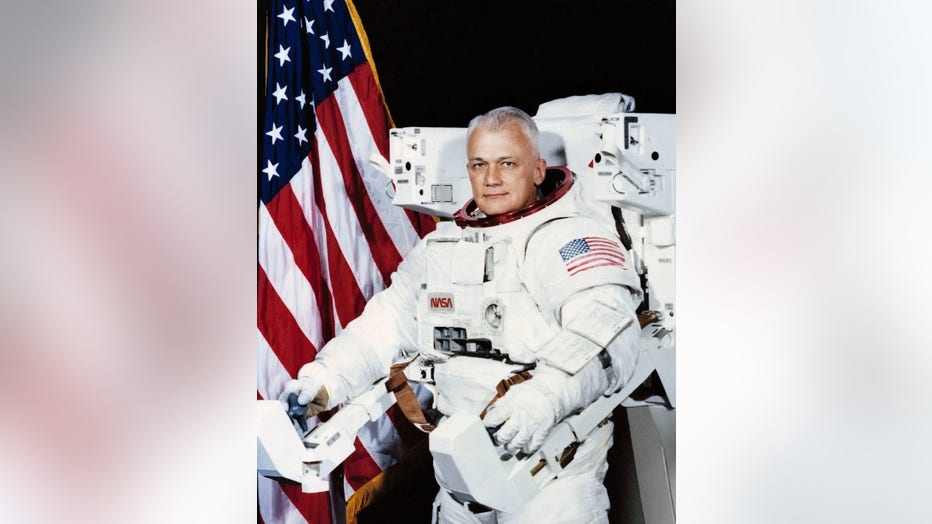
Official NASA portrait showing astronaut Bruce McCandless II attired in the Shuttle Extravehicular Activity (EVA) Suit with Manned Maneuvering Unit (MMU) attached.
That included testing out the new manned maneuvering unit. Previously, astronauts were always tethered to their spacecraft while conducting an extravehicular activity. But mission planners envisioned a need for spacewalkers to float freely, and the MMU was the answer.
The MMU was a large backpack carried in the shuttle’s cargo bay. A spacewalker could slide it on and then use joysticks in each hand to direct small nitrogen jets to float around.
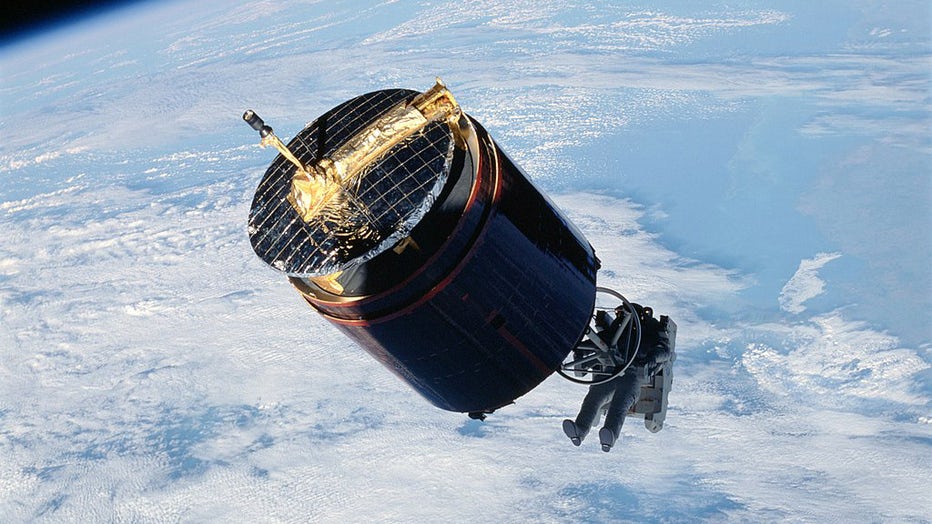
File: View of the Westar 6 satellite while Dale Gardner retrieves it during STS-51A (NASA photo).
After McCandless’ successful test on the STS-41B mission, George ‘Pinky’ Nelson later tried to use the MMU to chase down and catch a satellite on a Challenger flight featured in the iconic IMAX film "The Dream is Alive," but the docking tool failed. Astronauts on a later Discovery flight were able to capture two malfunctioning satellites with the help of the MMU and bring them back to Earth.
Why did NASA stop using it?
The 1986 Challenger disaster changed a lot of things for NASA. Satellite launches were moved away from the expensive space shuttle to cheaper disposable rockets, while NASA took a renewed focus on crew safety. That, combined with the astronauts’ improving skills with the shuttle’s robotic arm, ultimately eliminated the need for the MMU.
But the need didn’t totally go away. As construction progressed on the International Space Station, NASA realized that a docked shuttle couldn’t chase down a wayward spacewalker in the event that a tether failed. As a safeguard, the agency developed the Simplified Aid for EVA Rescue (SAFER) backpack.

Astronaut Jasmin Moghbeli is pictured tethered to the space station during a spacewalk to replace solar array hardware. The SAFER backpack wraps around her suit (NASA photo).
While not as powerful as the MMU, the small backpack has enough thrusting power to get an astronaut back to the station or the shuttle in an emergency.
The SAFR remains in use today at the space station, though it has never had to be used in an emergency.
The photo’s legacy
Bruce McCandless passed away in 2017, but then longtime astronaut’s contribution to the space program continues.
After the mission, he called the famous photograph "beautiful, partly because the sun is shining directly on me," according to NASA.
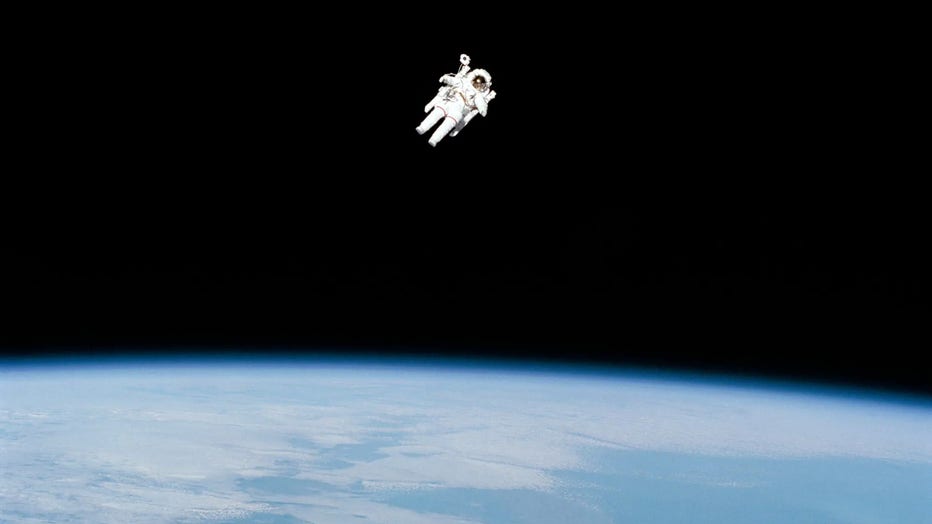
File: Astronaut Bruce McCandless II approaches his maximum distance from the Earth-orbiting Space Shuttle Challenger in this 70mm photo from Feb. 7, 1984. (NASA photo)
Because the sun was in his eyes, NASA noted, he closed the helmet visor, which made it difficult to identify who exactly was inside the spacesuit. "My anonymity means people can imagine themselves doing the same thing."
Senator John McCain, a Naval Academy classmate of McCandless, said the photo "inspired generations of Americans to believe that there is no limit to the human potential."
RELATED: NASA's most requested photo, the ‘Blue Marble', turns 50

